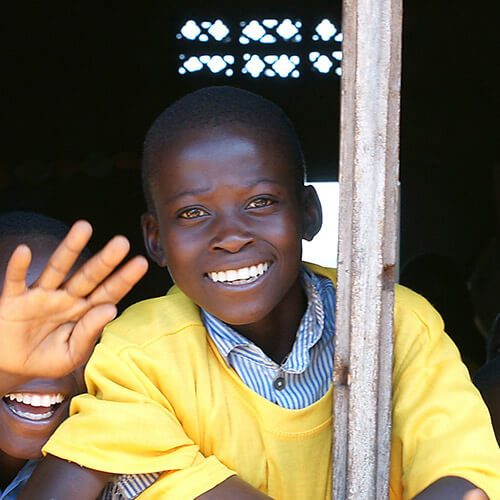The Court System from a Social Worker Perspective
My name is Linda, and I’m a fourth year Bachelor of Social Work student at York University. I am currently completing my practicum experience at WomenatthecentrE, an organization devoted to transforming lives and eradicating violence against women. Everything about the organization appealed to me, but I became particularly interested when I was introduced to the Court Watch program.
As mentioned in previous blogs, Court Watch is currently a volunteer based initiative that involves observing domestic violence related court cases in order to document how court systems work. I was fascinated to gain a stronger understanding of the justice system as a whole, and how it functions effectively, or ineffectively, in cases involving domestic violence issues.
Two months in, I’ve quickly learned that the court system is much more difficult to understand and much more complex than what you may see on your favourite weekly television shows. As someone new to the court system it can definitely be a challenge to follow what’s happening right before your eyes due to all the court jargon; sometimes it feels as if the court system involves learning an entire new language.
As you may have already read elsewhere on our blog, it’s often difficult to find the location of a domestic violence court case: some days I’d go to what I was expecting to be a domestic violence case, only to discover a murder trial, or a disorderly conduct case; other days I’d show up to a domestic violence case only to have it adjourned, or postponed, until another day Other times, I’d attend court and the trial I’d be observing would have started weeks ago, making it difficult to fully follow what was happening as I’d be missing vital information. I was learning that this initiative was going to take a lot of patience and perseverance.
One morning, I had been sent to a specific courthouse, to a specific room, where I was told a domestic violence case was being heard. The docket read that four cases were being heard that day: one individual was being accused of not appearing to a previous court date, two separate individuals were accused of breaching their probation conditions, and one individual was being accused of assault with a weapon. At some courthouses, cases are not clearly marked as “domestic violence,” and this was one of those courthouses. As all four cases were being heard in the same room, I entered the room prepared to sit through all four cases. Within ten minutes, one case had been moved to another courtroom, another had been postponed for twenty minutes while the accused sought additional legal advice, and the remaining two were waiting for individuals pertaining to the case to appear in court, and therefore court was in recess.
My reason for coming to court is basically to learn and the more I have reflected on this frustrating experiences the more I have realized that that for a woman victim of an abusive partner, the confusion and challenges of figuring out where to go and when to be there have much more serious consequences. Similarly, for me, the realization that to understand the criminal justice system almost requires learning a whole new language is an interesting and troubling phenomenon. For a victim trying to make her way through this system, the need to learn a new language on which her safety depends upon, could be understood and experienced as an overwhelming challenge and debilitating obstacle.
I was completely lost; I had no idea whether I should follow the case that had moved to another courtroom, or wait and see what would happen after the recess. I was worried the cases would be adjourned because we were still waiting for certain individuals to arrive. I sent a text to my fellow court watch volunteer Adam who advised me to wait in the courtroom I was in and see what happened. Luckily for me, this turned out to be the right decision.
The second case heard by the court involved a man, we shall refer to as “Lucas,” who was present in the courtroom, his ex-girlfriend “Samantha,” not present in the courtroom, and Samantha’s sister “Katie,” who was also not present in the courtroom. As the case unfolded, I learned that approximately a year previously, Lucas physically assaulted his then girlfriend Samantha, and was charged with assault. He was put on probation, with the conditions that he was to complete thirty hours of community service and stay away from anywhere Samantha lived, worked, or was reasonably expected to be.
Despite these conditions, one afternoon Lucas suddenly appeared at Samantha’s place of employment, begging her to talk to him. Lucas persisted, despite Samantha asking her to leave. Lucas became angry, and demanded Samantha speak to him; if she didn’t, he threatened to release documents proving that she had had an abortion, along with a sex tape, to her father. At this point, Samantha’s sister, Katie, who was employed at the same location, stepped in and told him to leave. At this point, Lucas threatened to f*** them both up, and left, threatening that he would be back when the shop was closing. Samantha and Katie called the police, who did arrest Lucas when he returned around closing hour.
On the day I was in court, Lucas was being charged with violating his probation conditions, as well as threatening harm on another. Katie was ill, and unable to be present in court, and Samantha simply didn’t want anything to do with Lucas, and therefore wasn’t present. Police evidence undeniably proved the events of the day beyond a reasonable doubt, and Lucas pled guilty. The defence counsel spoke about Lucas’s strong family support system, proven by the presence of his sisters in court; his goal to return to school the following year, and how in the meantime he financially assisted his family; how sorry he was for his actions, and how by pleading guilty he had really done Samantha a huge favour by avoiding the stress she would have faced having to come back to court. Both the crown and the defence council had put forth a joint submission for sentencing: an additional twelve months of probation, an additional thirty hours of community service, and in addition to conditions of no contact between Samantha and Lucas, Lucas was also supposed to stay away from Samantha’s immediate family, their places of work, anywhere they were reasonably expected to be, and was banned completely from the mall Samantha worked in.
As I awaited the judge’s decision, two thoughts ran through my mind: first, how could they possibly think the accused was doing the victim any “favours” by pleading guilty? Surely the more important issues to discuss were, had be not been violent in the first place… and then continued to breach his probation? These actions would have avoided this situation in the first place. Secondly, the joint submission for sentencing suggested, essentially, the identical sentence the accused received during his initial altercation with Samantha. If it didn’t stop things from escalating then, how could the same sentence possible change things the second time around? These questions were running through my mind…and then the judge spoke:
(This verdict may not be word for word, but from my memory and my notes, I know it’s pretty close…) “One of the most melancholy things in life is knowing that, at any time, the person we love can reject us, for any reason, or even no reason at all. For most of us, it’s painful, but we get through the rough times. The fact of the matter is, everyone has the fundamental right to reject others, and on that note, they have the right to live life free of penalty for rejecting others. To threaten someone with the release of a sex tape, the most intimate moments a couple can share, and abortion documents, is simply quite vile. I believe the sentence suggested today to be incredibly lenient. With that said, I am under legal obligation to take what the crown and defense counsel have suggested quite seriously, and for that reason, I am accepting their submission, with the minor change of fifty hours of community service as opposed to the thirty they have suggested.”
A battle of emotions ran through me; here was a judge who clearly understood the issues, understood the leniency of this sentence, understood the vile nature of the acts themselves, and yet accepted the submission. This case taught me that nothing is ever black and white in the court system.
A recent training that I attended as part of Court Watch helped me understand that it is quite difficult for a judge NOT to accept a joint submission. Joint submissions occur when the Defence and Crown lawyers get together out of Court and agree on a sentence. Judges typically accept these sentence submissions through the “rule of jurisprudence.”
I have learned that there are some very complex aspects of the criminal justice system. I do understand that dynamics and challenges such as this within our judicial system stem from different perspectives and stakeholders involved, and from historical traditions. However, has this decision ensured and prioritized victim’s safety? Has this system ensured Lucas is punished and discouraged for continuing to ignore his intimate partner’s rights? Throughout this, I still feel as if Lucas didn’t learn a thing, and wouldn’t be surprised if I see him in court again during my observations and it seems that I am not alone in my concerns; the Judge’s comments seemed to echo my own thoughts.
At this point, after observing this case, I feel that the justice system is far from a truly ‘just’ institution…how far? I’ve still yet to decide and I look forward to spending more time in court finding out this answer for myself.








